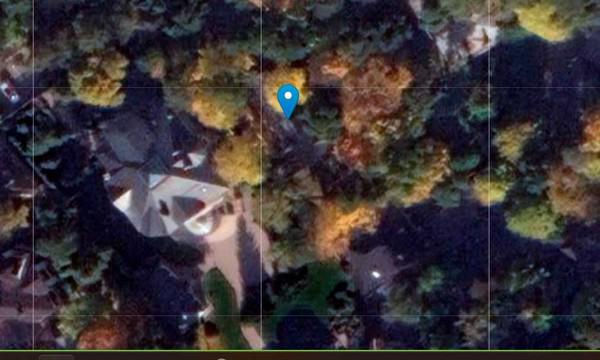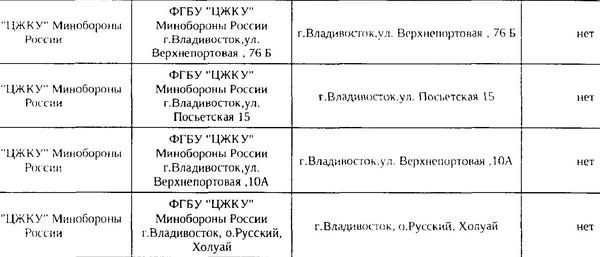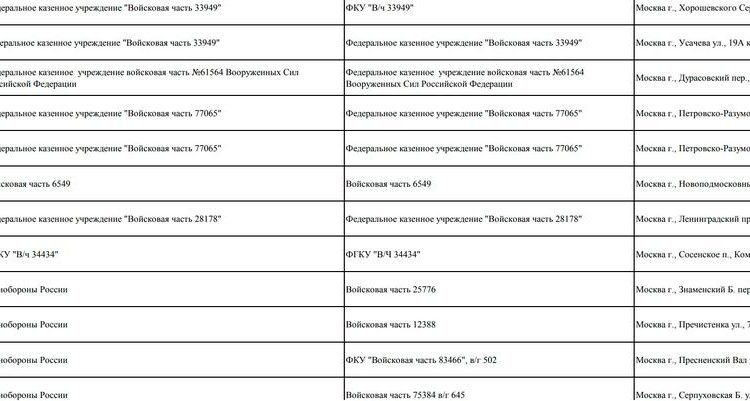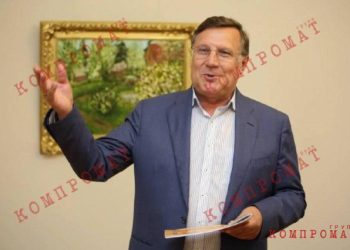Moreover, anyone can, without any effort, find out where employees of the most secret departments live in Moscow, see what nondescript buildings are actually objects of the special services, and envy the taste for life of the leadership of these special services.
The largest concentration of objects designed to ensure military security, protection from foreign intelligence services and dangerous crime is concentrated not in the depths of industrial zones and not in the thicket of residential buildings, but in Serebryany Bor — the thought even creeps in that this is actually a camouflage for rest areas of security forces.
Serebryany Bor is a specially protected natural area in the Moscow district of Khoroshevo-Mnevniki in the area of the Moskvoretsky natural and historical park. According to data for 2021, one hundred square meters of land there cost 34 million rubles. Despite the official ban on construction in this zone, in Serebryany Bor, as journalistic investigations have established, there are mansions Kirill Gundyaev (Patriarch Kirill), Vagita Alekperova, Yuri Trutnev. Vladimir Evtushenkov, Igor Sechin and other wealthy and influential Russians.
The ownership of some areas by law enforcement agencies was not a secret, but the document approved by Sergei Sobyanin directly stated which objects in the reserve park were connected with intelligence or counterintelligence.
Military unit 33949 with its official address at 11 Kolpachny Lane in Serebryany Bor has two facilities. What part is this Novaya Gazeta established back in 2010 – this is one of the screens of the Russian Foreign Intelligence Service.
The first object is the 2nd line of Khoroshevsky Serebryany Bor, property 67B. There are two buildings in Rosreestr with this address, brick buildings 1 and 5. Both were built in 2013. Building 1 is three-story, with an underground floor, with a total area of 565.3 sq. m. m, cadastral value – 99 million rubles. Building 5 is two-story, with an area of 133 sq. m. m and a cadastral valuation of 27 million rubles.
The buildings are located behind a high fence on a plot of 5000 sq. m. m with the purpose of “ensuring defense and security.” The dense greenery makes it difficult to see details in satellite images.
The second SVR facility in Serebryany Bor, judging by the register of special electricity consumers, is on the 2nd line, house 156. There is no such address on the 2nd line, the numbering ends at house 82. But there is a house 156 in Serebryany Bor on the 4th line , this is a mansion that is clearly visible on the Google satellite map. A house with this number is also present on the Yandex map, but the object is not listed in the cadastre. It can be assumed with a high degree of confidence that this is the desired object of the SVR, and a common mistake has crept into the list of Sobyanin’s “Special Group”. House 156 is located on a plot of 7500 sq. m. m, intended, as stated in the cadastral card, “to ensure defense and security.” Judging by the description, the mansion on the protected island is an administrative building.

The Ministry of Defense also acquired an important facility in Serebryany Bor and also on the 2nd line, building 43. This building belongs to military unit 66524, whose official location is the ministry building at Znamenka, 19. What kind of institution this is is unknown, the wording is “activities, related to ensuring military security” in the Unified State Register of Legal Entities does not say anything. Judging by the fact that the three-story building with an underground floor, built in 1996, with an area of 414.3 square meters. m is located on a plot of 15 acres “for the operation of a service dacha”; military security there is provided by one of the leaders of the military department. What kind of cottage is hidden in the thickets cannot be seen in the available photographs.

The Ministry of Internal Affairs also has special facilities on the island. The Federal Public Institution “Main Center for Administrative, Economic and Transport Support of the Ministry of Internal Affairs of Russia” (GCAHITO) includes as many as three buildings. On the 4th line, 131 – a brick building with an area of 245 sq. m. m, built in 1993. The plot is quite large, but Rosreestr does not show the exact area: apparently, land surveying has not been carried out.
On the 4th line, 14B, there are two objects at the State Central Agricultural and Technical Center of the Ministry of Internal Affairs, but it is difficult to understand from satellite maps what they are.

The Ministry of Internal Affairs also has another dacha in Serebryany Bor. Officially, it is listed as the FKU “Country House of Receptions of the Ministry of Internal Affairs “Rusichi”” of the Ministry of Internal Affairs of Russia. This institution is a well-known holiday home, club and children’s camp in the village of Panskoye, Maloyaroslavets district, Kaluga region. Not at all institution websitenor the advertisement says anything about the fact that “Rusichi” has some kind of division in Moscow.
There are several buildings on a plot of 37 acres at 2nd line, building 37/10. What is listed as a 70/10 house – with an area of 258.3 square meters. m, built in 1926. The purpose of the site is “operation of a service dacha.”
Another secret “dacha” object of the “Rusichs” is hidden in the Pokrovskoye-Streshnevo park on Ivankovskoye Shosse, 12. According to the documents, it is a wooden building built in 1936 with an area of 263 square meters. m.
In the photograph taken twelve years ago, as in the earlier ones, this unassuming, battered building behind the same wretched fence is clearly visible.


According to local researchers, in the post-war period there were dachas either for secret service employees or for Kurchatov himself. Now, as eyewitnesses write, the site is surrounded by a “tall fence with a huge number of surveillance cameras.” Who is hiding behind him is not visible.


In 2020 Bellingcat installedthat the complex belongs to Research Institute-2 of the FSB of Russia, which is engaged, among other things, in the development of toxic substances. And it was in these buildings that the security officers worked, secretly accompanying them on business trips. Alexei Navalny and those involved in his poisoning. At the same time, the official purpose of the land plot is “for recreational purposes.”
House ⅗, building 3 in Armenian Lane, judging by open data, belongs to the Clergy House of the Armenian Church. It turns out that the FSO has settled there.
The FSO is also doing something on Stoleshnikov Lane, in the same building as “Jean-Jacques” at number 6.
Here is a still unadvertised FSO office: Sadovaya-Chernogryazskaya st., 4. Three-story house built in 1870.
There are also traces of the FSO on Nikolskaya Street, 6, in a four-story building built in 1870.
At Malaya Ordynka, 22-37, building 2, there is an old two-story house belonging to the Iversky Church. There is no sign on the house; why the FSO needs it is unknown.
Sometimes the unexpected happens. So, it turns out that the Rostec building at 10 Vernadsky Avenue belongs to the FSO – although Sergey Chemezov is not included in the number of people entitled to state protection.

There are quite a few of these “FSB objects” in the Kurortny district. Security officers are very fond of old dachas in elite places. There are six such dachas in the prestigious Sestroretsk:
Lesnaya street, 10A (with a plot of 5000 sq. m);
Sestra River Embankment, 38;
Ermolovsky Prospekt, 13/10;
Kurortnaya street, 13;
Kurortnaya street, 10A;
Lesnaya street, 13/40.
Plus a plot in Zelenogorsk on Gornaya Street, 4.
The hotel (as indicated in the list of special objects) of the St. Petersburg FSB department is located not just anywhere, but on Kamenny Island at 2nd Berezovaya Alley, building 8 – one of the most prestigious and expensive places in the city. […]
There, on Kamenny Island, there is also a mansion of the FSB Border Department.


According to the documents, this is a “service and technical building.”
The St. Petersburg administration also uncovered the safe house of the FSIN GUODOP – specialists in external surveillance and secret technical measures live on Marata Street, building 76, letter “A” and building 78, letter “E”. In the photo it is forward under the arch.


In the St. Petersburg list until 2022 one could find the so-called dacha farm of the St. Petersburg police headquarters, which almost none of the employees have any idea about – not about their honor. Officially, as follows from the documents at our disposal, these are “hotel-type premises” intended for “rest and recreation.” In the more modern version of the list of special consumers of electricity, these objects no longer exist.
For example, this is an “object” in Solnechny on 2nd Borovaya Street, building 9.

But in Sestroretsk on Ermolovsky Prospekt.


In the border Belgorod region there are no facilities of the Ministry of Defense and the FSB (not counting one administrative building of the border department). In the same border Bryansk region, all the addresses of the FSB “offices” and the locations of border guards are meticulously listed, including even a “mobile temporary point” in the village of Nekislitsy. The deployment of military units in the region can be studied in no less detail.

In the Primorsky Territory, the addresses of units of the Ministry of Defense are indicated in detail and specifically, but without numbers and names of units. However, some addresses speak for themselves, such as “Knevichi airfield” or “o. Russian, Kholuai”, the location of the legendary detachment of combat swimmers.

Kamchatka – on the contrary, only military unit numbers without addresses. Feature: in the list, unlike other regions, there is not a single civilian facility, nor a single facility of the special services. Only Ministry of Defense facilities are listed as non-disabled.
The Chechen Republic, judging by the list approved by Ramzan Kadyrov, is a stronghold of peace: the list includes only hospitals, schools and kindergartens – and not a single military unit.
But in North Ossetia-Alania there are “objects” of FSB control in almost every village.

Consequences
Information on the deployment of military units, as well as sensitive and especially important facilities, in accordance with part one of Article 5 of the Law “On State Secrets”, refers specifically to state secrets, and their disclosure is subject to criminal liability. A more specific “list of information in the field of military, military-technical activities of the Russian Federation, which, if received by foreign sources, can be used against the security of the Russian Federation” is in FSB Order No. 547 of November 4, 2022.
Information about the Ministry of Defense, FSB, FSO, SVR, contained in open lists, as well as data about defense enterprises, critical support systems and many other objects, clearly fits into the wording of the law on state secrets and the order of the FSB, and the fact of publication of these lists with uncontrolled access to them for an unlimited number of readers – as in a textbook, in the disposition of Article 283 of the Criminal Code.
Article 4 of the Criminal Code establishes the equality of citizens before the law. This means we are waiting for 89 criminal trials – according to the number of subjects of the Federation.
According to the GAS Justice system, since the beginning of 2022, the courts have received 53 criminal cases of disclosure of state secrets (Article 283 of the Criminal Code of Russia), and court decisions have been made in 41 cases.
In 37 cases, convictions were made, one case was transferred to jurisdiction, and in three cases the cases were dismissed due to the expiration of the statute of limitations for criminal prosecution. There are no acquittals.
In all cases, cases at first instance were considered by the courts of the constituent entities of the Russian Federation or the corresponding military courts: only they can consider “regime” cases related to state secrets. In all cases, the hearings were held behind closed doors, and the information of the defendants and their lawyers was hidden.
We did not find any releases from law enforcement agencies about these cases in the public space, with one exception: in March 2023, the Kaliningrad press, citing the local FSB department, reported that the technical director of one of the Kaliningrad construction organizations was sentenced to a suspended sentence, who “disclosed secret information regarding one of the FSB objects,” which, however, did not lead to serious consequences. Well, in the lists published by regional authorities, there are hundreds of objects of the FSB and other intelligence services.
If the technical director of a construction company in Kaliningrad received a guilty verdict for disclosing the location of one “FSB facility,” it means that the governors are not entitled to a discount.









